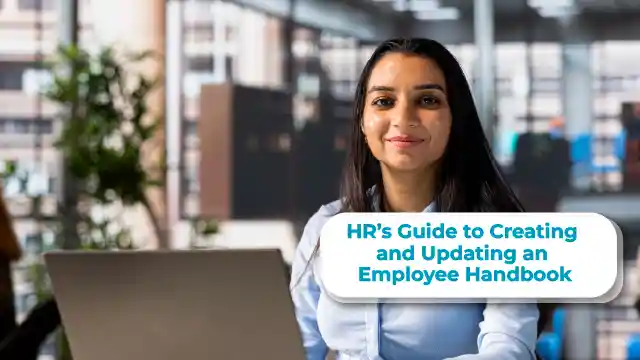What is Casual Leave?
Establishing a robust casual leave policy is essential for aligning with both legal standards and a company's values, providing employees with the necessary flexibility to manage unforeseen personal matters or emergencies. Recognising the importance of work-life balance in today’s workplace, such policies not only comply with legalities but also support a healthy, productive work environment by acknowledging and accommodating the occasional personal needs of employees.
Whom do you want to insure?
- Customized & affordable plans
- 24/7 claim support
- Complete wellness benefits
Casual Leave Policy Overview
A well-defined casual leave policy acknowledges that employees occasionally face unforeseen personal matters or emergencies. Casual leave provides them with the flexibility to handle these situations on time without having to resort to unpaid leave or sacrificing earned leave intended for longer absences.
In conjunction with benefits like group health insurance, a casual leave policy creates a holistic approach to supporting employees' well-being, both physically and mentally. When employees feel supported in managing their personal needs, they are more likely to return to work refreshed, focused, and motivated. This leads to increased productivity, reduced absenteeism, and a more engaged workforce.
Scope and Eligibility
- A robust casual leave policy applies to all employees full-time, part-time, and contractual. This ensures that everyone, regardless of their employment status, has access to the necessary time off for unexpected personal needs or emergencies.
- While full-time employees receive the full allotment of casual leave days, part-time employees may receive prorated benefits based on their regular work schedule. Consider including a clear calculation method for prorating these benefits.
- Extend casual leave benefits to contract workers, possibly with a designated amount of leave. This demonstrates a commitment to fair labour practices and supports a positive work environment.
- Clearly outline any eligibility requirements for casual leave. This might include a minimum notice period (except for emergencies), potential probationary periods for new employees, and situations where management discretion in approval might apply. Establishing these criteria upfront promotes fairness, prevents misunderstandings, and ensures equitable access to casual leave benefits across the organisation.
Casual Leave Rules in India
While specific rules can vary across companies and states, here's a general overview of the common practices:
- Entitlement: Employees are typically entitled to a set number of casual leave days per calendar year, often between 8 and 14 days. Limitations may apply to how many consecutive casual leave days can be taken at once. Generally, it cannot be combined with other forms of leave, except for special circumstances.
- Request & Approval Process: Employees should inform their manager or HR department in advance about their need for casual leave, whenever possible. Approval is usually required from a manager or supervisor to ensure work coverage and minimise disruption.
- Advance Notice: Though casual leave caters to unexpected situations, employees are encouraged to provide as much advance notice as possible, especially when their absence might impact deadlines or project schedules.
- Documentation: Documentation for casual leave may not be necessary for short absences. However, companies might request supporting documentation for extended leave periods or when frequent absences occur.
It's crucial to check any state-specific labour laws that might impact casual leave policies, as these may supersede company guidelines. Always refer to your organisation's employee handbook or HR policies for the most accurate and up-to-date casual leave rules. Employees covered by collective bargaining agreements might have specific casual leave provisions negotiated within their union contracts.
How to Apply for Casual Leave?
- Carefully review your company's casual leave policy to understand the application process, notice requirements, and any documentation needed.
- Follow established procedures for leave requests whether that's a formal application, email notification, or using a specific HR system.
- Provide as much advance notice as possible, especially if your absence might impact project timelines. This demonstrates respect for your team and enables them to manage workloads.
- A brief explanation for your absence usually suffices.
- Be aware of situations where advance approval for casual leave is mandatory (extended leave periods or peak work times). Have any necessary supporting documentation readily available if your company requires them.
Accumulation of Casual Leave Carry Forward
Not every company allows employees to carry over unused casual leave days into the next year, so always double-check your organisation's specific policy. If your company does permit carry-forward, here are the key things to know:
- There's often a cap on how many casual leave days you can roll over into the new year. Understanding this limit helps you plan accordingly.
- Unused casual leave that's been carried forward may have an expiration date. Ensure you're aware of the timeframe to utilize these accrued days.
- Your company might have rules on when and how you can use carried-over casual leave, potentially giving priority to current year's leave first.
Conclusion
A well-defined casual leave policy is a crucial component of a positive and supportive work environment. By providing employees with designated time off for unforeseen circumstances and personal matters, companies demonstrate a commitment to work-life balance and overall employee well-being. Understanding the objectives, rules, and application procedures for casual leave ensures that employees can utilise this benefit without undue stress while maintaining organisational efficiency. It's important to remember that casual leave policies must also align with legal requirements, ensuring a fair and compliant workplace for all.

Group Health Insurance Premium Calculator
Who do you want to insure?
- Employees
- Employees & their family
Minimum lives should be 7
Include maternity coverage
Wellness At Work
Benefits of group health insurance
insurance coverage. Be assured, all your questions
will be answered
Disclaimers+



 Expert advice made easy
Expert advice made easy




























